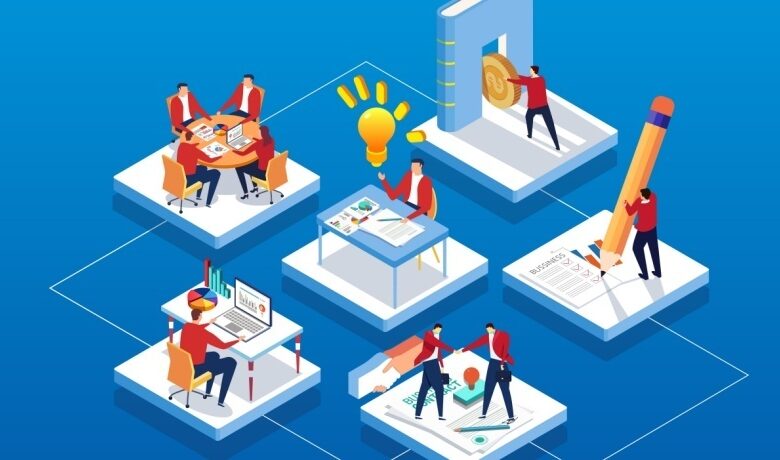Making Learning In The Flow Of Work A Success

Getting Learning In The Flow Of Work Right
Interest in learning in the flow of work has been growing since Josh Bersin amplified the term (based on prior research [1]) in 2018. It is appealing to both learners and L&D professionals because it’s so fluid and natural–it’s both efficient (which learners want) and effective (which L&D professionals need).
Imagine you’re working on a report and you need to add a pivot table but you don’t remember exactly how to do it. What do you do? If you’re like most people you go to the “Help” menu, do a Google search, or head to YouTube. You find some quick instructions, figure it out, and you’re back to writing your report. You didn’t sign up for a class or wait to meet with an experienced colleague; you got the help you needed while doing your work.
When asked “What content creation challenge keeps you up at night?” as part of our L&D and Learner Experience 2024 Trends Report survey, one of our respondents said:
“Building learning into the flow of work because learning is always seen as ‘additional’ and taking time away from core tasks which need to be performed.”
Learners are telling us the same—they want content that is personalized and pushed to them when they need it. And for good reason: SHRM’s 2022 Workplace Learning & Development Trends report found that 25% of employees say they lack the time they need to complete training.
In our survey, “learning in the flow of work” ranked #8 of 20 top L&D department challenges. There is excitement for what is possible, but how do we create precisely what each individual needs, and ensure they get it when they need it?
Three Recommendations For Success
#1. Use microlearning. Microlearning is small pieces of learning material, each focused on a specific learning objective. This enables an employee to get exactly what they need, and makes learning more personalized and customized. The good news is that many of us are already doing this: 47% of L&D teams plan to deploy a microlearning program in 2024. [2]
#2. Embed it in the work. Place content so it is easily available when the employee needs it. Can you anticipate when the learner is going to need something and make it available at that time?
#3. Measure usage. Learners choose the content they want to consume, so collecting data will help you understand what they are using, and what they are not. Usage indicates usefulness, so this will give you tremendous insight into what learners find most helpful.
Imagine The Future: Three Examples
Imagine these learning in the flow of work examples:
- You have a sophisticated piece of software that employees find difficult to use. By tracking mouse movements you can provide pop-ups if there are signs that the user isn’t finding what they need, or if there is a more efficient way to execute the task they just did. I personally know of an organization that did this using xAPI.
- You have a chatbot that uses generative AI and an LLM based on your company’s data to enable the employee to ask questions about any system, process, or activity they might do at work. Think of it like your work BFF that you can ask any question, no matter how big or small. Many organizations are exploring these sorts of systems right now.
- Your call center employees have a tool that is active during customer calls and uses speech recognition to provide pop-up support that is relevant to questions being asked.
Most importantly, notice that all of these examples talk about “the employee” not “the learner.” When we think about placing learning in the flow of work we are more focused on the employee’s performance and how we support them in doing their work.
Learning in the flow of work enables employees to learn while doing their work. It’s organic, efficient, and effective.
Download the L&D And Learner Experience 2024 Trends Report today to delve into the findings and discover how you can leverage the latest technologies and strategies to enhance your training program and encourage meaningful change.
References:
[1] Scaffolding Learning In The Flow Of Work [2] 2024 LinkedIn Workplace Learning Report 
SweetRush
Our job is to help you achieve your objectives and be successful. Engage us at any point, from analysis to custom development (including e-learning, mobile, gamification, and ILT) to evaluation.
Source link



